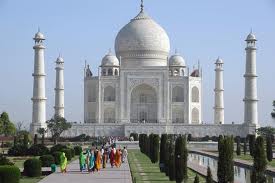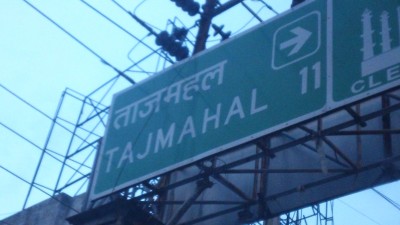
11 miles to go

Entry to the Taj Mahal. The door entry perfectly shapes the dome of the Taj Mahal

Prior to entering….the history of the Taj Mahal
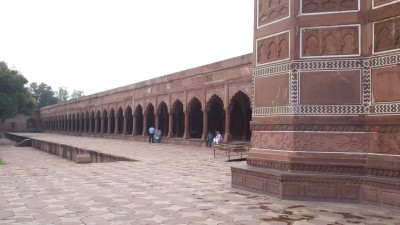
Back side of the entry building. This served as, and still serves as the guard wall for the Taj Mahal
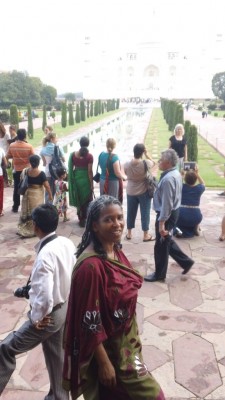
Walkway to the Taj Mahal
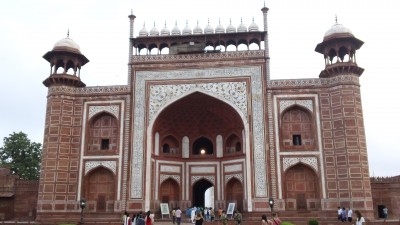
Backside of the entry building to the Taj Mahal, you have entered the grounds at this point.
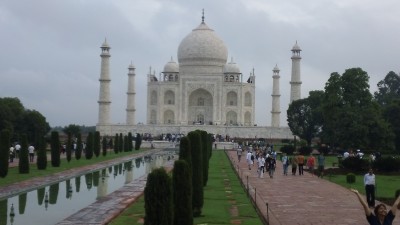
The Taj Mahal
Our entire group met in Delhi, then traveled the next day to our final cultural outing in India – the Taj Mahal. It was everything you’ve ever heard and even more for me.
I normally don’t see the need for a guide as I usually simply listen to someone else’s guide if I want to know something, but it was definitely a great idea to have one for the Taj (we are friends now, so I can nickname her). I loved listening to the stories about Shah Jahan and his endearing love for his primary wife (yes, he had two others) Arjumand Banu, whom he actually renamed Mumtaz Mahal, because her name meant “jewel of the palace.” I’m sure that didn’t go well with the other two, but the fact that Mumtaz gave him 13 babies, was extremely intelligent, and protective of him surely helped. In fact, she traveled to the battlefield with him where she died giving birth to the 13th child.
The Taj is Shah Jahan’s monument to Mumtaz. It is built on the banks of the Jumuna River, which along with the four squared gardens, makes the grounds even more beautiful. The Red Fort was the living quarters of the royal family and can be seen from the raised platform which the Taj seemingly floats on. It is a good thing considering the fact that Shah Jahan’s son eventually deposed his father and imprisoned him in the Red Fort. This was a sort of Karma considering Shah Jahan did the same exact thing to his own father. The son’s two acts of graciousness after his betrayal was that he allowed his father to look at the Taj from his prison home, and he allowed him to be buried next to Mumtaz when he died. How nice of him…
the view of the Taj from the red fort (place of Shah Jahan’s imprisonment)
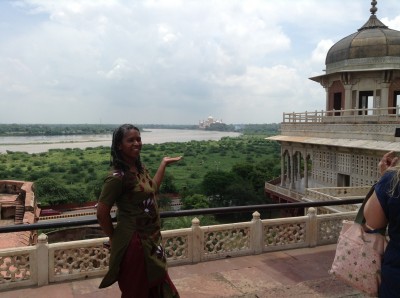
perfect symmetry at every corner and every angle of the grounds. this is taken from the entry building.

Water works leading to the Taj Mahal
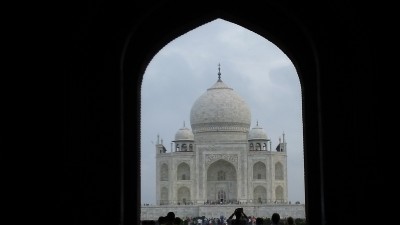
Aside from the love stories and the beauty of the Taj and its grounds, the most striking take-away for me was the advanced scientific skills of the Mughal empire. The architecture was in perfect symmetry. The image above (Taj framed in black) was taken about a quarter mile away in the red entrance building (wing of entrance building seen at the top), yet it looks as if it is the Taj in a picture frame.
Our tour guide eventually did what I abhor, – took us on the “help me get a kickback” merchandise stop at a marble factory. The good part is that we had a chance to watch marble artisans shape and place jewels in marble,. This taught me about the detailed craftsmanship which went into the planning and building of the Taj. Aside from white marble, the gems used were orange carnelian (which glows with light), jasper, jade, crystal, turquoise, and sapphire. This project was begun in 1626 A.D., and completed in 1648 A.D. Every single inch of the monument yells “scientific and mathematical geniuses!”
I knew that the Islamic world was far more advanced than the Europeans were (Europe was just ending the 30 years war in 1648 A.D.) , but this SHOWED me that fact. I was not reading it from a book, wow there is a huge difference. I will never teach the Mughal empire in quite the same way again. The master architect was Ustad ‘Isa, a renowned Islamic architect during that time period. The building was so perfect (according to our guide), that the Shah Jahan cut off Isa’s hand so that he could not create anything better. yikes
orange carnelian, jasper, jade, crystal, turquoise, and sapphire embedded into marble – this is woven throughout the Taj-the process is artisan at its best
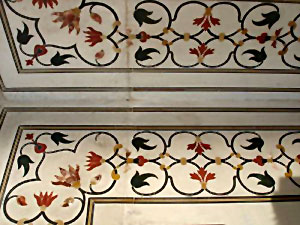
Jewels embedded into the Taj Mahal
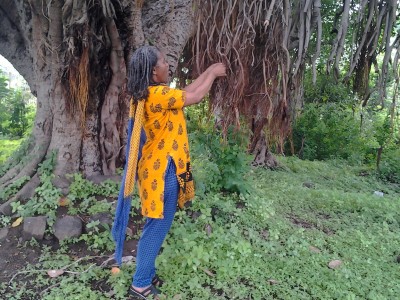 From the first time I saw this tree, I was in love with it. I do not know why, it was just beautiful. I later came to understand that it does not exist in America, therefore I had never seen it before. The Indian Banyon Tree, as it is named, has an extremely long life life cycle, and it is revered as it is the national tree of India. It offers cool shade to travelers, figs to birds, and it is actually worshipped. The largest tree in the world is in fact, an Indian Banyon tree.
From the first time I saw this tree, I was in love with it. I do not know why, it was just beautiful. I later came to understand that it does not exist in America, therefore I had never seen it before. The Indian Banyon Tree, as it is named, has an extremely long life life cycle, and it is revered as it is the national tree of India. It offers cool shade to travelers, figs to birds, and it is actually worshipped. The largest tree in the world is in fact, an Indian Banyon tree.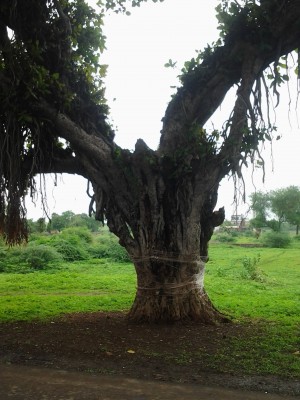
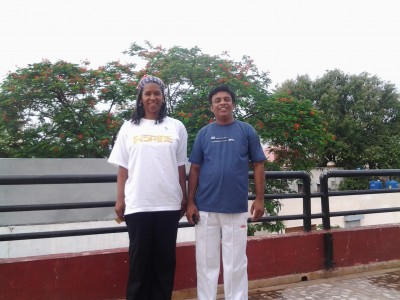

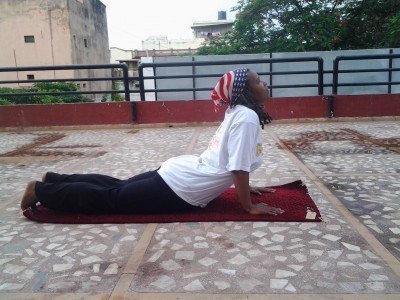
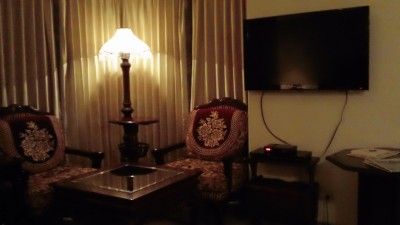

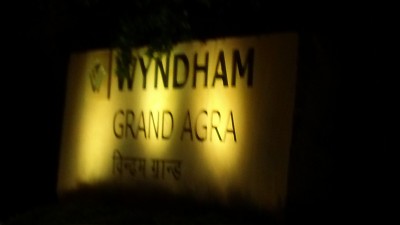
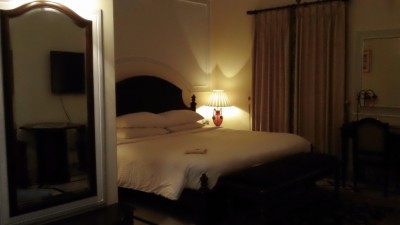

 Well forget the Taj Mahal, I could have stayed right here at the Wyndham for the next week and been just as happy. My goodness, even if I had not experienced the challenging issues in the rural hotels that I stayed at during my trip, this hotel was like the gift that keeps giving. I don’t think I have ever taken pictures of a hotel until this one….
Well forget the Taj Mahal, I could have stayed right here at the Wyndham for the next week and been just as happy. My goodness, even if I had not experienced the challenging issues in the rural hotels that I stayed at during my trip, this hotel was like the gift that keeps giving. I don’t think I have ever taken pictures of a hotel until this one….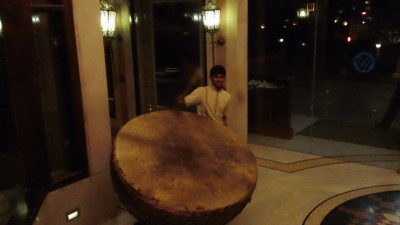
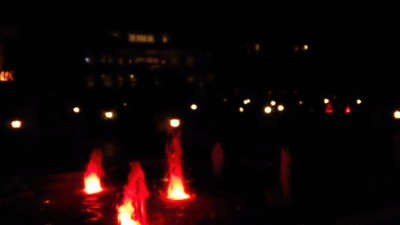











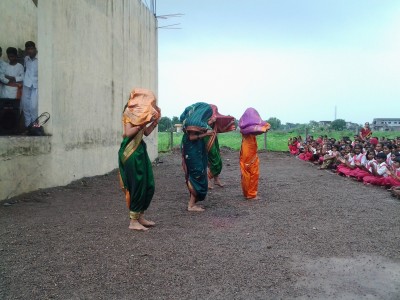 Our host, Rajesh, planned a wonderful reception for us at his school, it really was overwhelming and to top everything off, he made it a surprise planned after our initial visit….we were greeted and led in by a band, had honorable turbans wrapped onto our heads, kumkums placed on our foreheads (in Hindu – red turmeric in the place of the third eye, a blessing and a greeting for guests also confused with the term tilak and bindi), shawls placed on our shoulders, and then walked into a field with at least 150 patient students seated patiently waiting for us.
Our host, Rajesh, planned a wonderful reception for us at his school, it really was overwhelming and to top everything off, he made it a surprise planned after our initial visit….we were greeted and led in by a band, had honorable turbans wrapped onto our heads, kumkums placed on our foreheads (in Hindu – red turmeric in the place of the third eye, a blessing and a greeting for guests also confused with the term tilak and bindi), shawls placed on our shoulders, and then walked into a field with at least 150 patient students seated patiently waiting for us.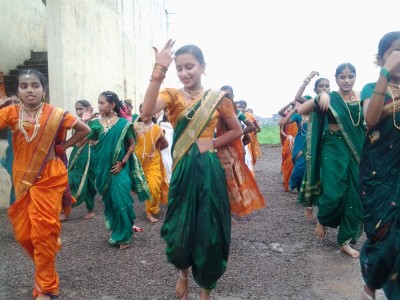

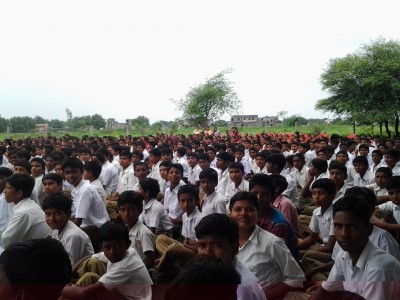
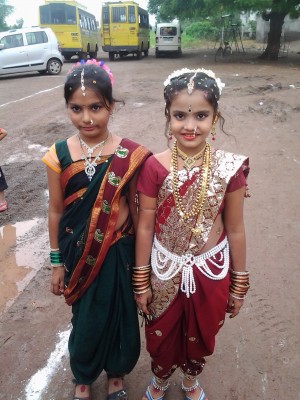

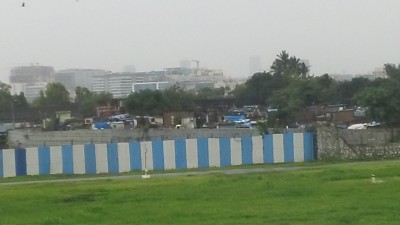
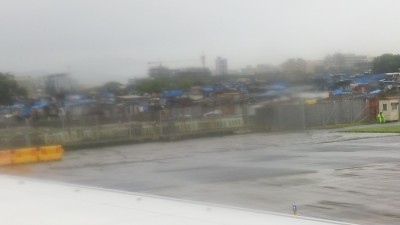
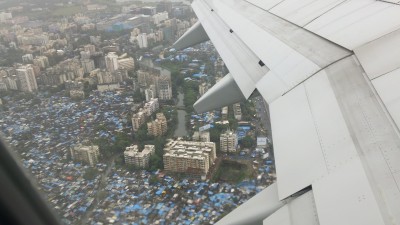

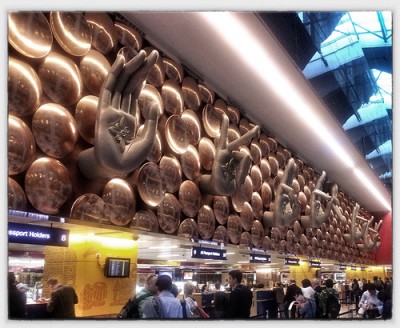
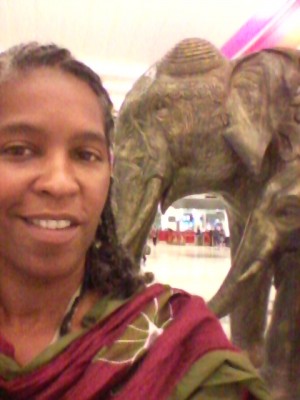
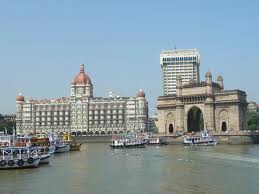
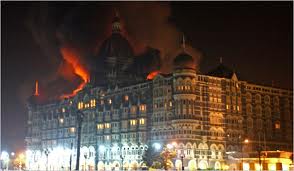
 blue green color of the lake caused by algae, look closer, you can see the color is left behind as the water recedes….it is the world’s third largest natural salt water lake
blue green color of the lake caused by algae, look closer, you can see the color is left behind as the water recedes….it is the world’s third largest natural salt water lake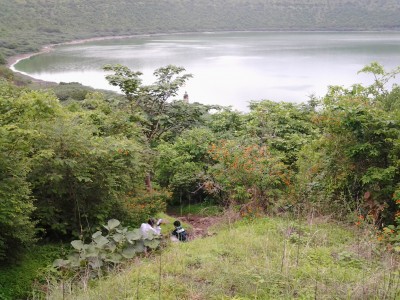

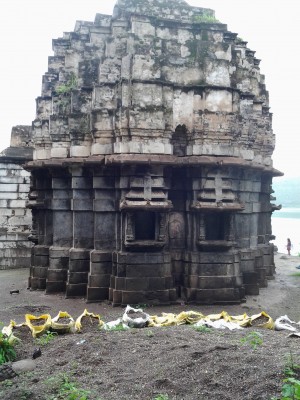 Kamalja Devi Temple at the base of the lake
Kamalja Devi Temple at the base of the lake
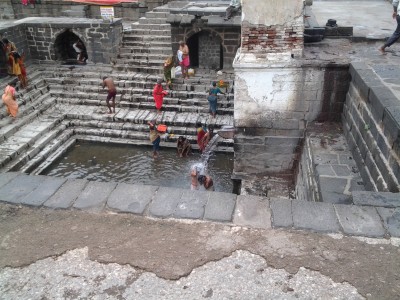 the local town people take their baths and wash their clothes at this historic temple. the water has flowed for centuries and the source is unknown.
the local town people take their baths and wash their clothes at this historic temple. the water has flowed for centuries and the source is unknown.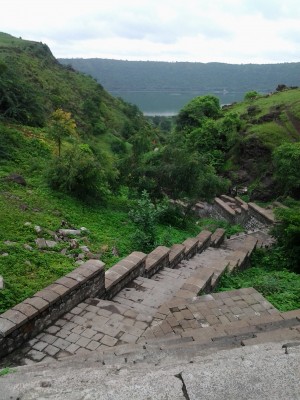
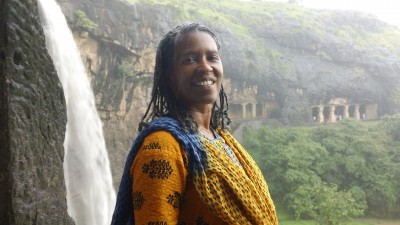
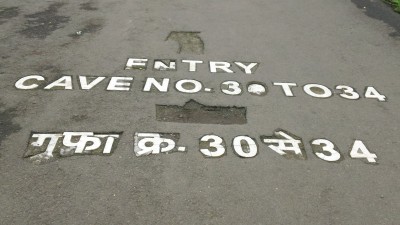
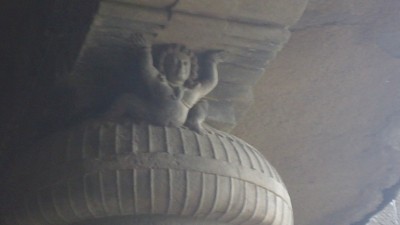
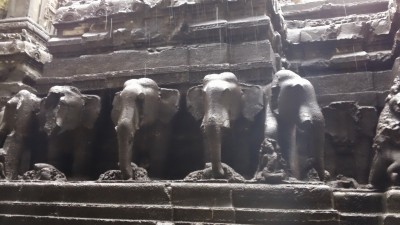
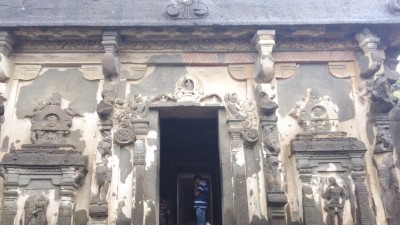
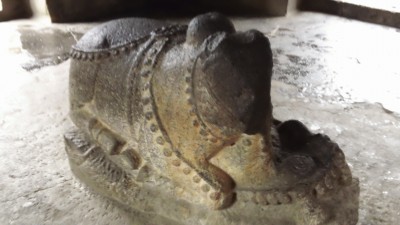

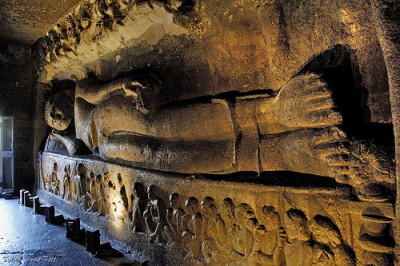
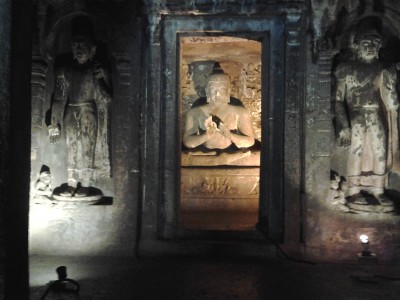 a temple in one of the caves
a temple in one of the caves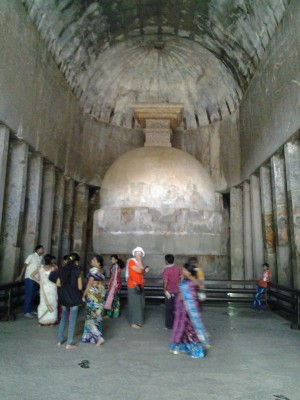
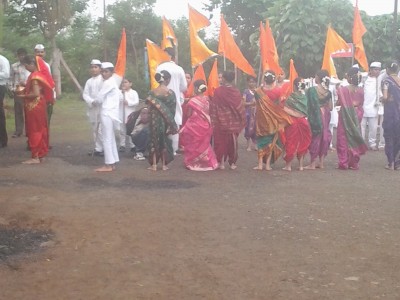


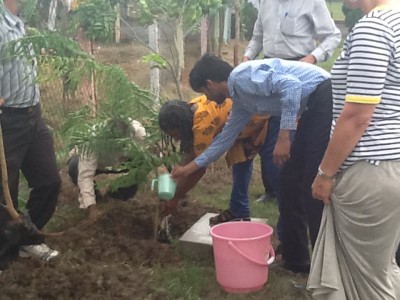

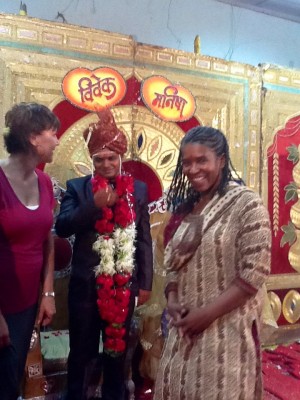
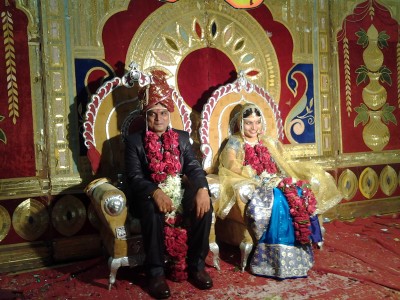
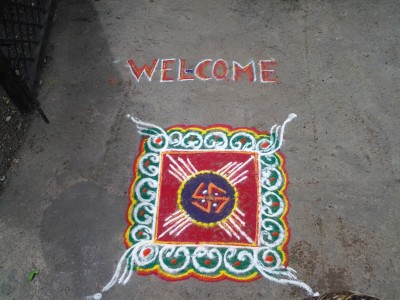
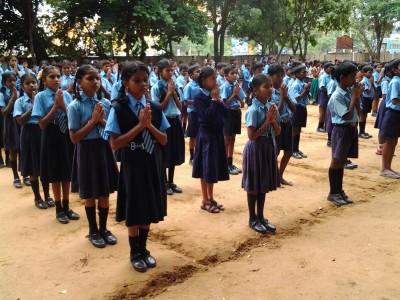
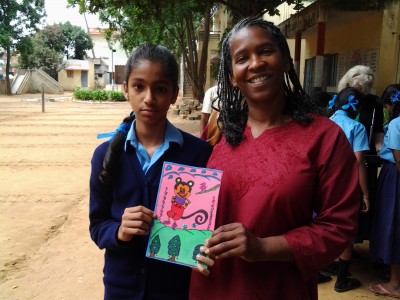
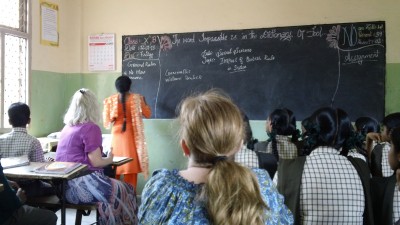
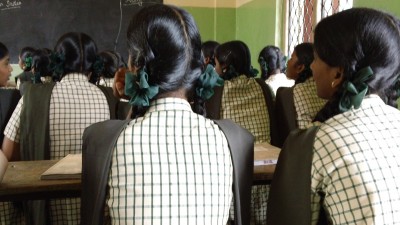


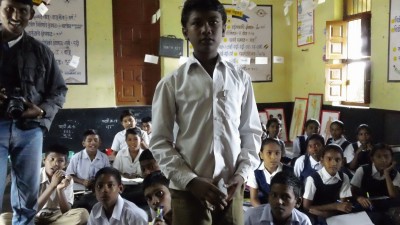 a blackboard wall chart detailing all of the Teacher’s credentials
a blackboard wall chart detailing all of the Teacher’s credentials 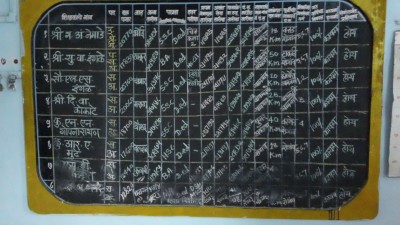
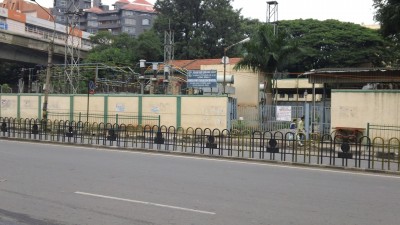
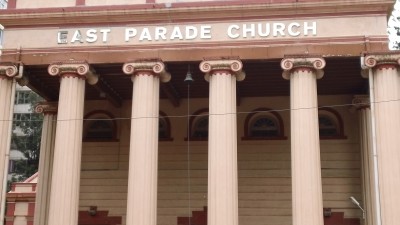

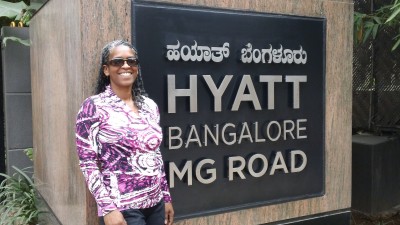

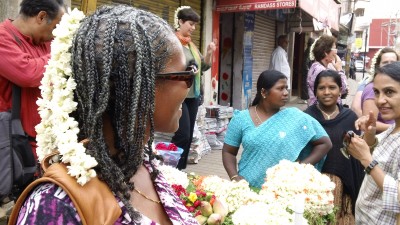
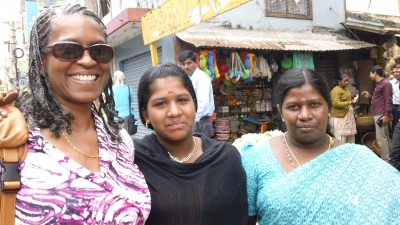
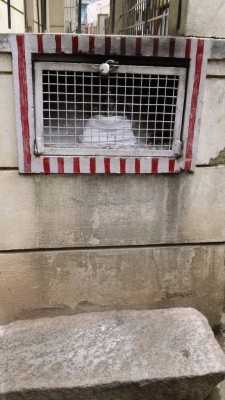
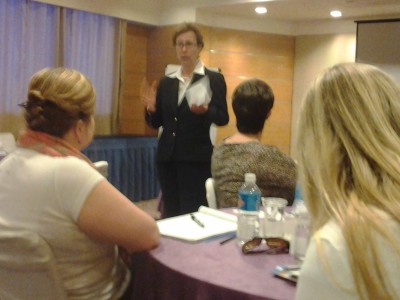
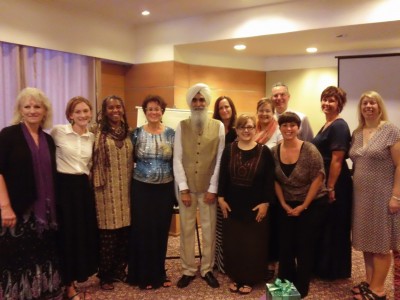
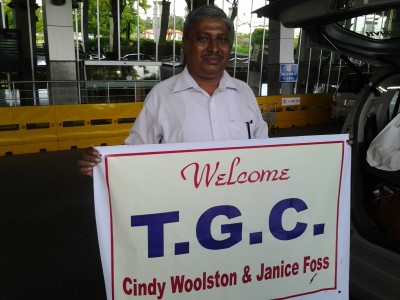
 Rajesh, our host, greeting us at the airport in Nagpur
Rajesh, our host, greeting us at the airport in Nagpur